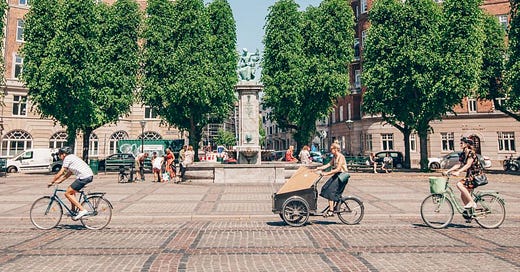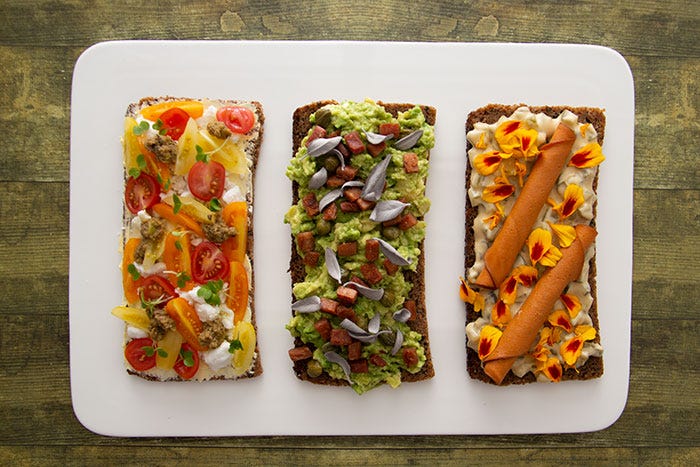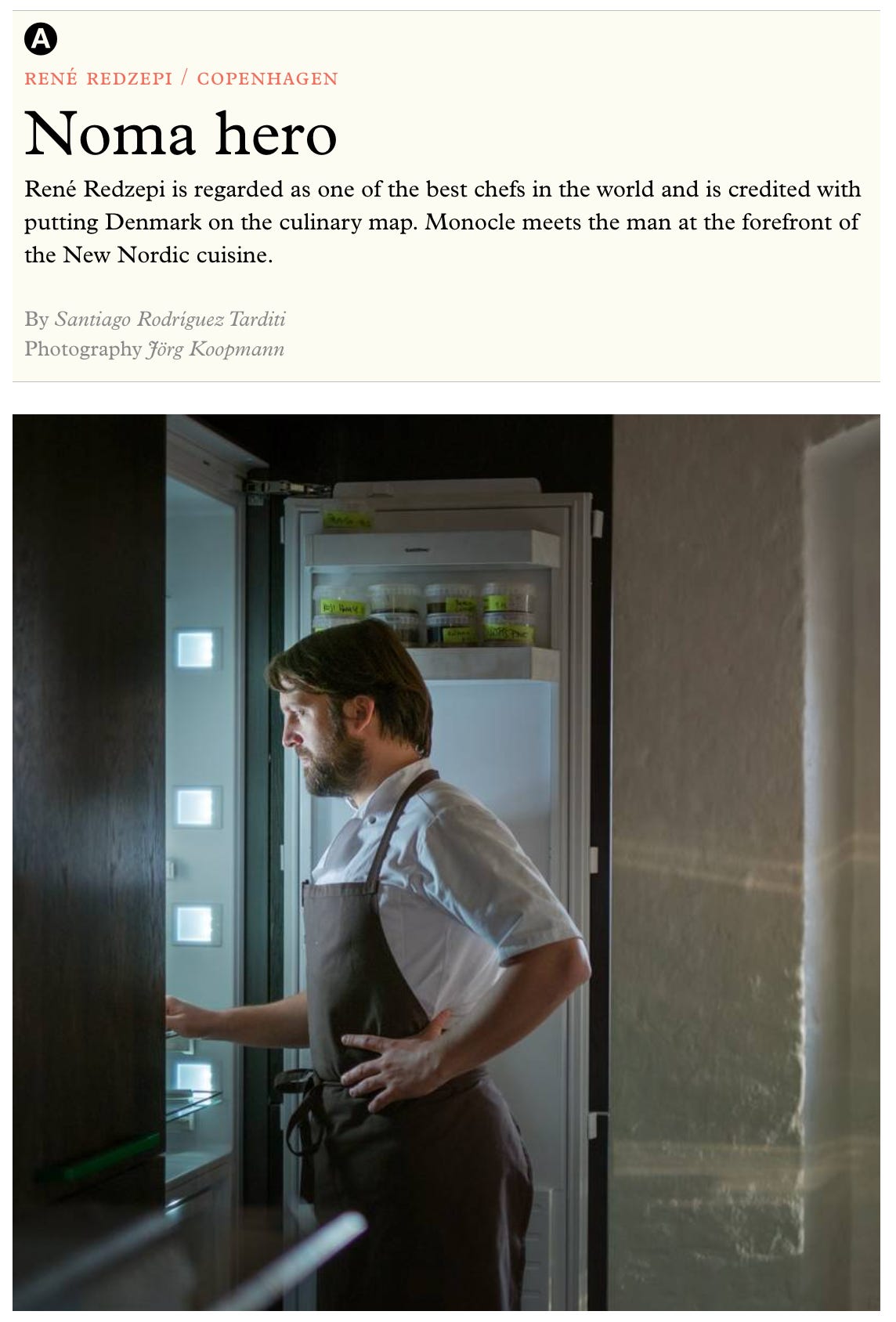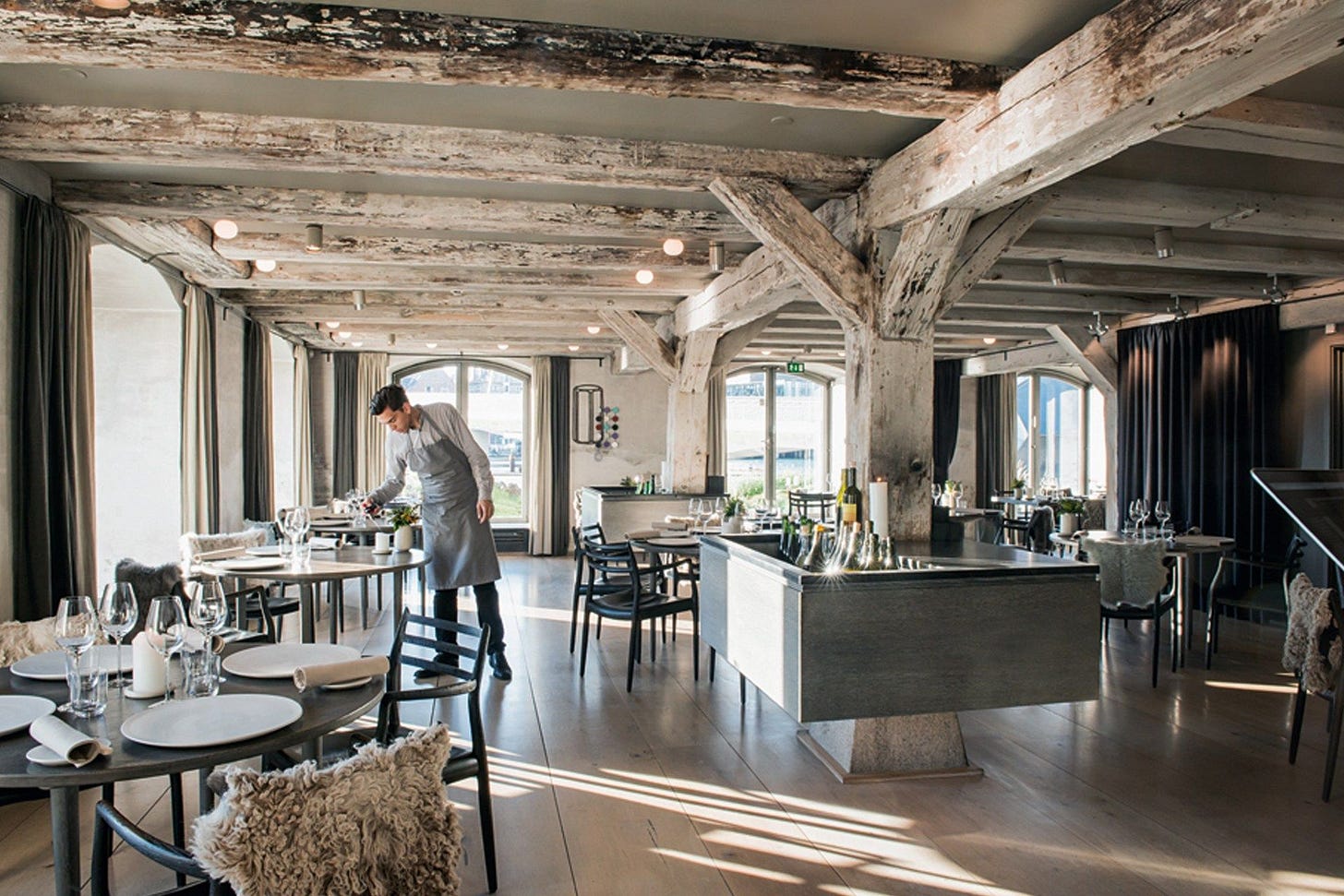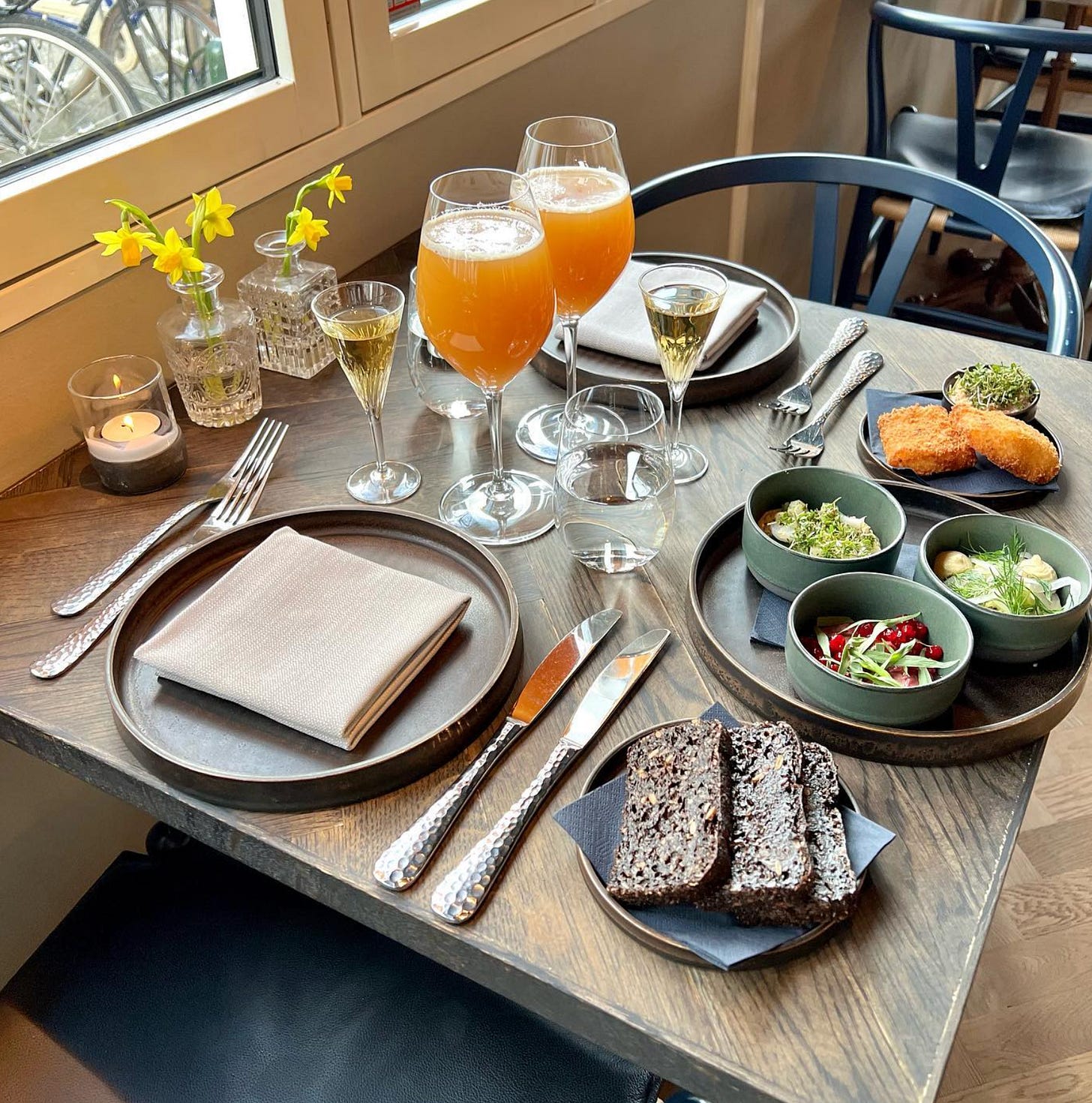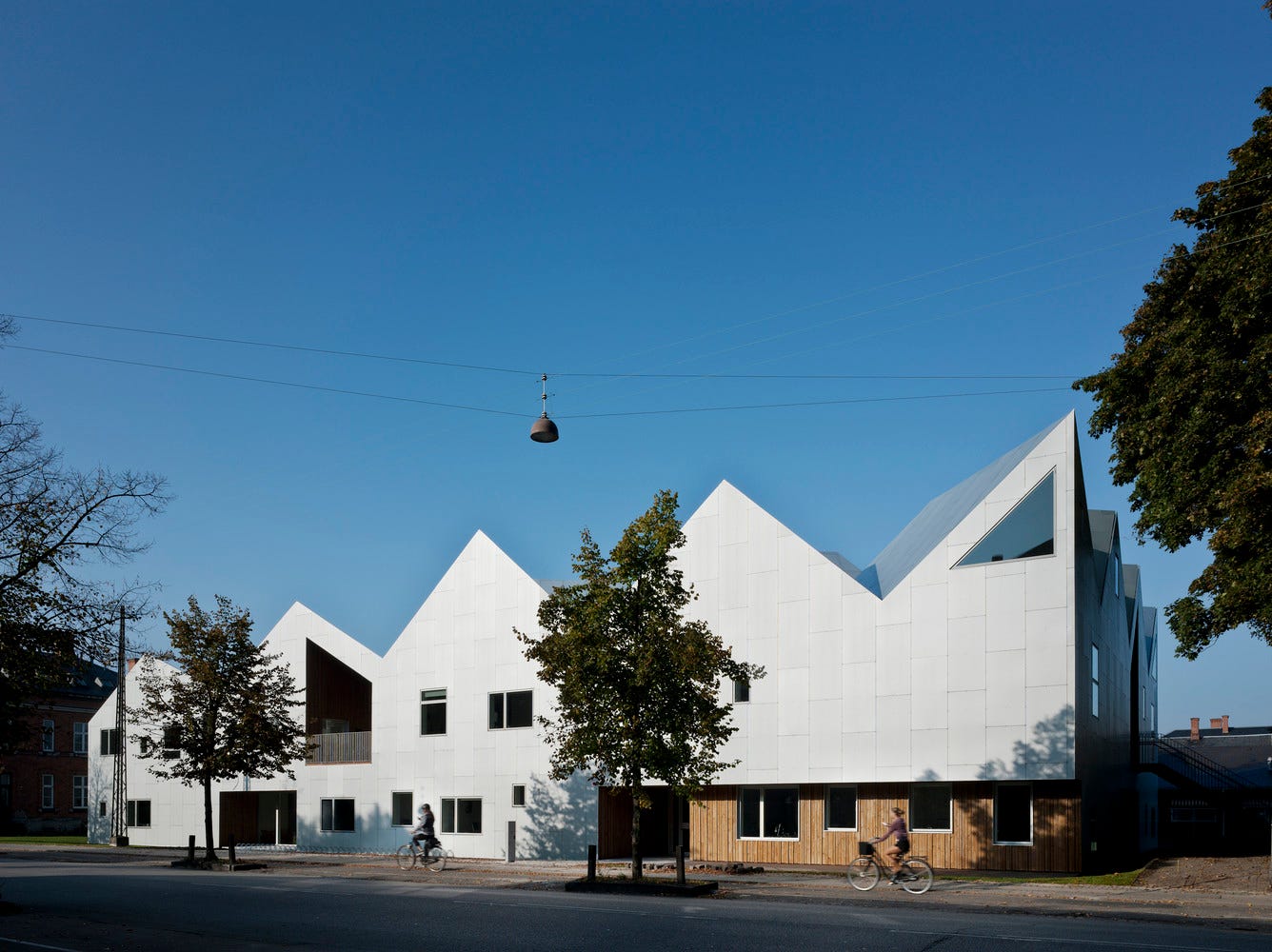Dining in Denmark: From Delight to Disaster / Cenando en Dinamarca: De Delicia a Desastre
Going to the best restaurant in the world was not what I expected / Ir al mejor restaurante del mundo no fue lo que esperaba.
Para leer la version en español, desliza hasta abajo.
I’ve been to Denmark three times; once for pleasure and twice for work. I always felt attracted by the Nordic countries and their concept of social democracy, their approach to style, aesthetics, and quality of life. I had seen enough photos of good-looking people and places to book myself a ticket to Copenhagen and visit what appeared to be one of the cleanest, most civilized cities in the world.
At the time I was living in London, and everyone was talking about the booming Nordic culinary scene led by this small country (it had 5.6 million inhabitants back in 2013 when I visited). I wanted to witness what the buzz was all about. Once I set foot in the airport I realized how well-organized and clean everything is. Public transportation was on-time. There were recycling bins everywhere. People walked at a leisurely pace, making sure not to move too rapidly to startle anyone or too slow to annoy them.
I took the train downtown to Frederiksberg Alle, a tree-lined street that seemed like a large-sized museum maquette, a carefully planned and well-kept part of the city where I found a surprisingly affordable hotel, simple and quiet (the kind of place that still requires you to leave your large brass key at the front desk whenever you step outside). A few blocks down was Bjornkaelderen, or the Bear’s Kitchen, a quaint little restaurant where I got my first try of a smørrebrød, a traditional open-faced sandwich usually made of dense and flavourful dark rye bread, topped with different spreads and garnishes.
They might sound simple, but each of these creations is a carefully crafted formula mixing pickled vegetables, fresh herbs, and a protein of some sort. Back then I still ate meat, so I tried a tasting platter that had a variety of prepared animals, mainly herring (a small fish abundant in Danish waters since the Viking Age). Surely, today there are plenty of vegan options on the menu.
The second time I visited was to write a story about the Centre For Cancer And Health, an award-winning building designed by NORD Architects. In Denmark, healthcare is mostly free and funded by taxes—a great opportunity in a country that’s known for design: this complex was one of the few wellness locations I’ve ever visited that truly felt like it was created to heal the patients. This was a very short trip that only lasted a few days, enough to interview the architects (back then I worked as the travel and lifestyle editor at Monocle magazine), but it gave me enough time to visit Barr, a restaurant that had recently opened and was already making waves across Europe. The food wasn’t striking, but I did become friends with one of the waiters who turned out to be a bartender at a speakeasy nearby. Soon after I wrapped up my meal I headed to the prohibition-era bar, had a few drinks, and met a few locals who were interested in the Colombian journalist scoping out the city’s gastronomy scene.
My third visit was the most important: after months of trying, I had secured an interview with René Redzepi, the main figure in the growing Scandinavian culinary industry and the founder of Noma, considered by many to be the best restaurant in the world. It was an honor for me to spend a full day with him, walking around his minimalist-yet-elegant restaurant in what used to be an old port warehouse. Redzepi was a very laid-back person, quite charming and easy to engage with.
We spoke for hours as he showed me how Noma operated—from their purveyors (some were dedicated exclusively to providing foraged ingredients from the country’s remote forests and beaches) to their multicultural kitchen staff (which included refugees supported by social programs). I saw young stagiaires working on repetitive tasks with the focus of a zen monk while the station chefs made sure the quality of their prime matter was up to the standards of the best restaurant on the planet. René and his close entourage supervised it all with the seriousness of a five-star general deciding the day’s strategy.
The kitchen was also open to experimentation, and some of their dishes were the result of molecular techniques combined with seasonality and lots of trial and error. That day a local fisherman had brought a new species that had never been prepared at Noma. It was introduced to René the same way I imagine kings were presented with exotic bounties from foreign lands. The charming owner and head chef at Noma began to explore the fish, slicing it open to decide how he would best use it.
At one point, he cut the animal’s intestines, revealing protuberant innards that twisted and went from orange to bright red in color, with veins that ranged from dark blue to green, a bowel rainbow of sorts. “We’ll serve these tonight”, he said to his sous-chefs, who agreed in unison: “Yes, chef!”. Even then, as a food journalist and avid meat eater, I remember feeling somewhat repulsed about the look of those multi-hued viscera. But who was I to challenge the top cook on the globe?
Noma usually books year-round on the same day they open the reservations for the season; only a handful of people have ever gotten to go through the multi-coursed journey (which can last up to 4 hours). Unexpectedly, after telling René that my father was in town with me, he suggested we eat there. My dad and I were part of a select group of gourmands who entered the gates of culinary Valhalla, ready to embark on an uncharted adventure through plates that played with your head, heart, taste buds, and wallet: the price per person was $400 USD back then (but luckily I was offered a special discount and ended up paying $400 USD for both of us).
We tried around 20 different recipes and about 10 biodynamic, and organic wines. These were the days before we all Instagrammed our food so I don’t have any pictures of the courses, but I recall being blown away by their meticulous preparation, the background history of the cooks who personally brought them to the table, as well as the mind-blowing textures and complex taste in each bite we took.
That night, my father and I decided to walk home because we felt we had overindulged; we felt full and bloated, content but slightly uneasy. We blamed ourselves for complaining about the size of our stomachs after having dined like the gods and decided to sleep it off. Around 3 AM, I woke up with a sharp pain that sent me running to the bathroom; my body expelled every single bit of food I had ingested a few hours earlier, simultaneously making me feel relieved and enraged. About an hour later, as I had surrendered to the idea of spending the night on the toilet, I managed to get back to bed and sleep. The morning after I was still feeling queasy, but my dad felt fine. Both of us skipped breakfast and headed to the airport. It was only a few days later that the news hit the gastronomical press by storm: “Food Poisoning Outbreak Strikes Noma, the World’s Best Restaurant: Dozens Fall Sick.”
The situation reached mainstream media and it was only a matter of time before the Danish food authority opened a case; the main cause was identified as a norovirus, a common cause of foodborne illness often associated with raw or inadequately heated foods with symptoms including nausea, vomiting, diarrhea, and some stomach cramping. The outbreak reportedly affected 63 out of 435 guests—and I was one of them. After a detailed investigation, the authorities ruled the source to be a worker who was unaware of carrying the virus.
But I know it was the fish.
Cenando en Dinamarca: De Delicias a Desastre
He ido a Dinamarca tres veces; una por placer y dos por trabajo. Siempre me sentí atraído por los países nórdicos y su concepto de democracia social, su estilo, el diseño y la calidad de vida que promueve esa region. Había visto suficientes fotos de personas y lugares atractivos como para convencerme de comprar un boleto a Copenhague, aparentemente una de las ciudades más limpias y civilizadas del mundo.
En aquel momento vivía en Londres, y se hablaba especialmente de la emergente escena culinaria nórdica en el pequeño país (tenía 5.6 millones de habitantes en el 2013, cuando fui). Quería presenciar de qué se trataba todo el revuelo. Una vez que puse un pie en el aeropuerto, me di cuenta de lo bien organizado y limpio que estaba todo. El transporte público llegaba a tiempo. Había contenedores de reciclaje por todas partes. La gente caminaba a un ritmo tranquilo, asegurándose de no moverse demasiado rápido para asustar a nadie ni demasiado lento para molestar.
Tomé el tren al centro de la ciudad y bajé en Frederiksberg Alle, una calle arbolada que parecía una maqueta de museo de gran tamaño. Era un barrio cuidadosamente planificado y bien mantenido de la ciudad donde encontré un hotel sorprendentemente asequible, simple y tranquilo (el tipo de lugar que todavía requiere que dejes tu gran llave de bronce en la recepción cada vez que sales). A pocas cuadras estaba Bjornkaelderen, o La Cocina del Oso, un pintoresco restaurante donde probé por primera vez los smørrebrød, un tradicional sándwich abierto generalmente hecho de un pan de centeno oscuro denso y sabroso, coronado con diferentes salsas y acompañamientos. Pueden parecer simples, pero cada una de estas creaciones es una fórmula cuidadosamente elaborada que mezcla vegetales encurtidos, hierbas frescas y una proteína de algún tipo. En aquel entonces todavía comía carne, así que probé una bandeja de degustación que tenía una variedad de animales preparados, especialmente el arenque (un pequeño pez abundante en las aguas danesas desde la época vikinga). Seguramente, hoy en día hay muchas opciones veganas en el menú.
La segunda vez que visité fue para escribir una historia sobre el Centro para el Cáncer y la Salud, un edificio galardonado diseñado por NORD Architects. En Dinamarca, la atención sanitaria es en su mayoría gratuita y financiada por impuestos, una gran oportunidad en un país conocido por su diseño: este complejo fue uno de los pocos lugares de bienestar que he visitado que realmente parecía creado para curar a los pacientes. Fue un viaje muy corto que sólo duró unos días, suficiente para entrevistar a los arquitectos (en aquel entonces trabajaba como editor de viajes y estilo de vida en la revista Monocle), pero me dio tiempo suficiente para visitar Barr, un restaurante que había abierto recientemente y ya estaba causando sensación en toda Europa. La comida no fue impresionante, pero hice amistad con uno de los camareros que resultó ser un barman en un speakeasy cercano. Poco después de terminar mi comida me dirigí al bar de la era de la prohibición, tomé unas copas y conocí a algunos locales que estaban interesados en el periodista colombiano explorando la escena gastronómica de la ciudad.
Mi tercera visita fue la más importante: después de meses de intentarlo, había conseguido una entrevista con René Redzepi, la figura principal de la creciente industria culinaria escandinava y el fundador de Noma, considerado por muchos como el mejor restaurante del mundo. Fue un honor para mí poder pasar un día entero con él, conversando y paseando por su restaurante minimalista (pero elegante) en lo que solía ser un antiguo almacén portuario. Redzepi era una persona muy relajada, bastante encantadora y fácil de tratar. Hablamos durante horas mientras me mostraba cómo funcionaba Noma. Me presentó a sus proveedores (algunos estaban dedicados exclusivamente a proporcionar ingredientes recogidos de los bosques y playas remotos del país) y a su personal de cocina multicultural (que incluía refugiados apoyados por programas sociales). Vi a jóvenes stagiaires trabajando en tareas repetitivas con el enfoque de un monje zen mientras los chefs de estación se aseguraban de que la calidad de su materia prima estuviera a la altura del mejor restaurante del planeta. René y su entorno más cercano supervisaban todo con la seriedad de un general de cinco estrellas decidiendo la estrategia del día.
La cocina también estaba abierta a la experimentación, y algunos de sus platos eran el resultado de técnicas moleculares combinadas con la estacionalidad, además de mucho ensayo y error. Ese día, un pescador local había traído una nueva especie que nunca se había preparado en Noma. Fue presentado a René de la misma manera que imagino a los reyes siendo presentados con botines exóticos de tierras lejanas. El encantador propietario y chef principal de Noma comenzó a explorar el pez, cortándolo para decidir cómo lo usaría mejor. Cortó los intestinos del animal, revelando entrañas protuberantes que se retorcían y pasaban de naranja a rojo brillante, con venas que variaban de azul oscuro a verde, creando una especie de arco iris intestinal. "Vamos a servirlos esta noche", dijo a sus sous-chefs, quienes estuvieron de acuerdo al unísono: "¡Sí, chef!". Incluso entonces, como periodista de alimentos y ávido comedor de animales, recuerdo que me sentí algo repugnado por el aspecto de esas vísceras multicolores. Pero, ¿quién era yo para desafiar al mejor cocinero del mundo?
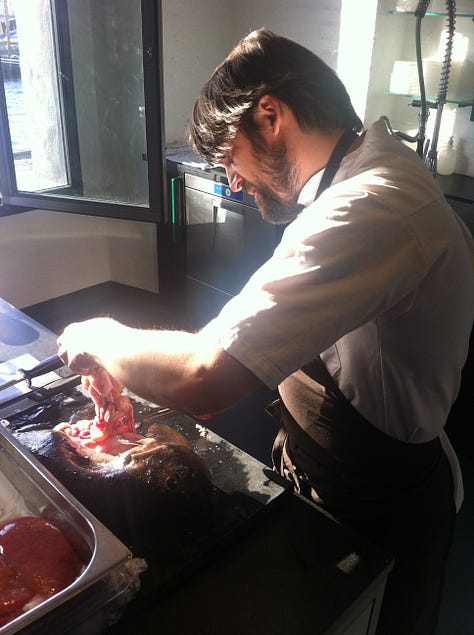
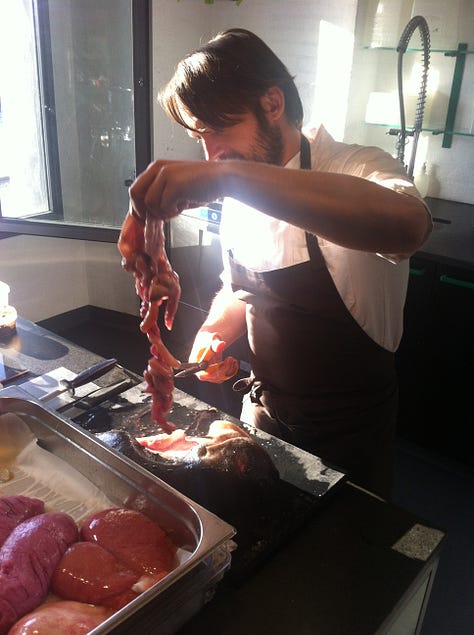
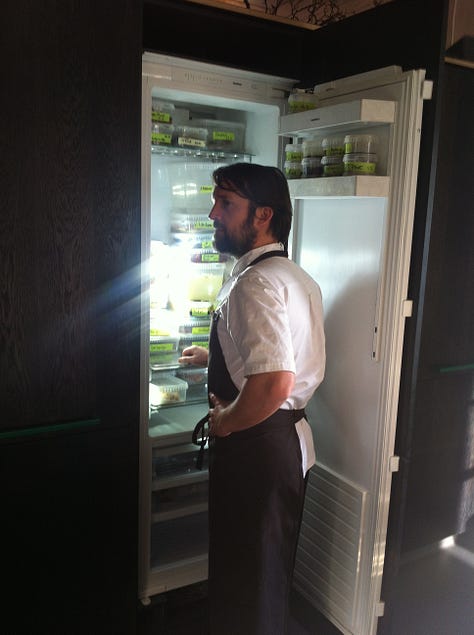
Noma suele tener reservas todo el año el mismo día que abren las reservaciones para la temporada; sólo un puñado de personas ha tenido la oportunidad de probar su menú de degustación (que puede durar hasta 4 horas). Inesperadamente, después de contarle a René que mi padre también estaba en la ciudad conmigo, sugirió que comiéramos allí. Mi padre y yo fuimos parte de un selecto grupo de gourmets que entraron en las puertas del Valhalla culinario, listos para embarcarse en una aventura inexplorada a través de platos que jugaban con la cabeza, corazón, papilas gustativas y cartera: el precio por persona era de $400 USD en aquel entonces (pero afortunadamenteme ofrecieron un descuento especial y terminé pagando $400 USD por ambos).
Probamos alrededor de 20 recetas diferentes y unos 10 vinos biodinámicos y orgánicos. Aquellos eran los días antes de que todos Instagrameáramos nuestra comida así que no tengo ninguna foto de los platos, pero recuerdo haberme asombrado con su meticulosa preparación, la historia de fondo de los cocineros que los traían personalmente a la mesa, las texturas alucinantes y el complejo sabor en cada bocado.
Esa noche, mi padre y yo decidimos caminar a casa porque sentíamos que habíamos comido en exceso; estábamos llenos e hinchados, contentos pero ligeramente incómodos. Nos culpamos a nosotros mismos por quejarnos del tamaño de nuestros estómagos después de haber cenado como dioses, y decidimos irnos a dormir. Alrededor de las 3 de la madrugada, me desperté con un dolor agudo que me envió corriendo al baño; mi cuerpo expulsó hasta el último pedazo de comida que había ingerido unas horas antes, haciéndome sentir aliviado y furioso al mismo tiempo. Alrededor de una hora después, cuando me había resignado a la idea de pasar la noche en el baño, logré volver a la cama y dormir. A la mañana siguiente todavía me sentía un poco mareado, pero mi padre estaba bien. Ambos nos saltamos el desayuno y nos dirigimos al aeropuerto. Sólo unos días después la noticia sacudió la prensa gastronómica: "Brote de Intoxicación Alimentaria en Noma, el Mejor Restaurante del Mundo: Decenas de Personas Enferman."
La situación llegó a los medios de comunicación y fue solo cuestión de tiempo antes de que la autoridad alimentaria danesa abriera un caso; la principal causa fue identificada como un norovirus, una causa común de enfermedades transmitidas por alimentos a menudo asociadas con alimentos crudos o insuficientemente calentados, generando síntomas que incluyen náuseas, vómitos, diarrea y algunos calambres estomacales. El brote supuestamente afectó a 63 de los 435 comensales, y yo fui uno de ellos. Puede sonar contra-intuitivo, pero haber sufrido una intoxicación alimentaria en Noma mejoró mi experiencia allí.
(Fue el pescado, lo sé).

